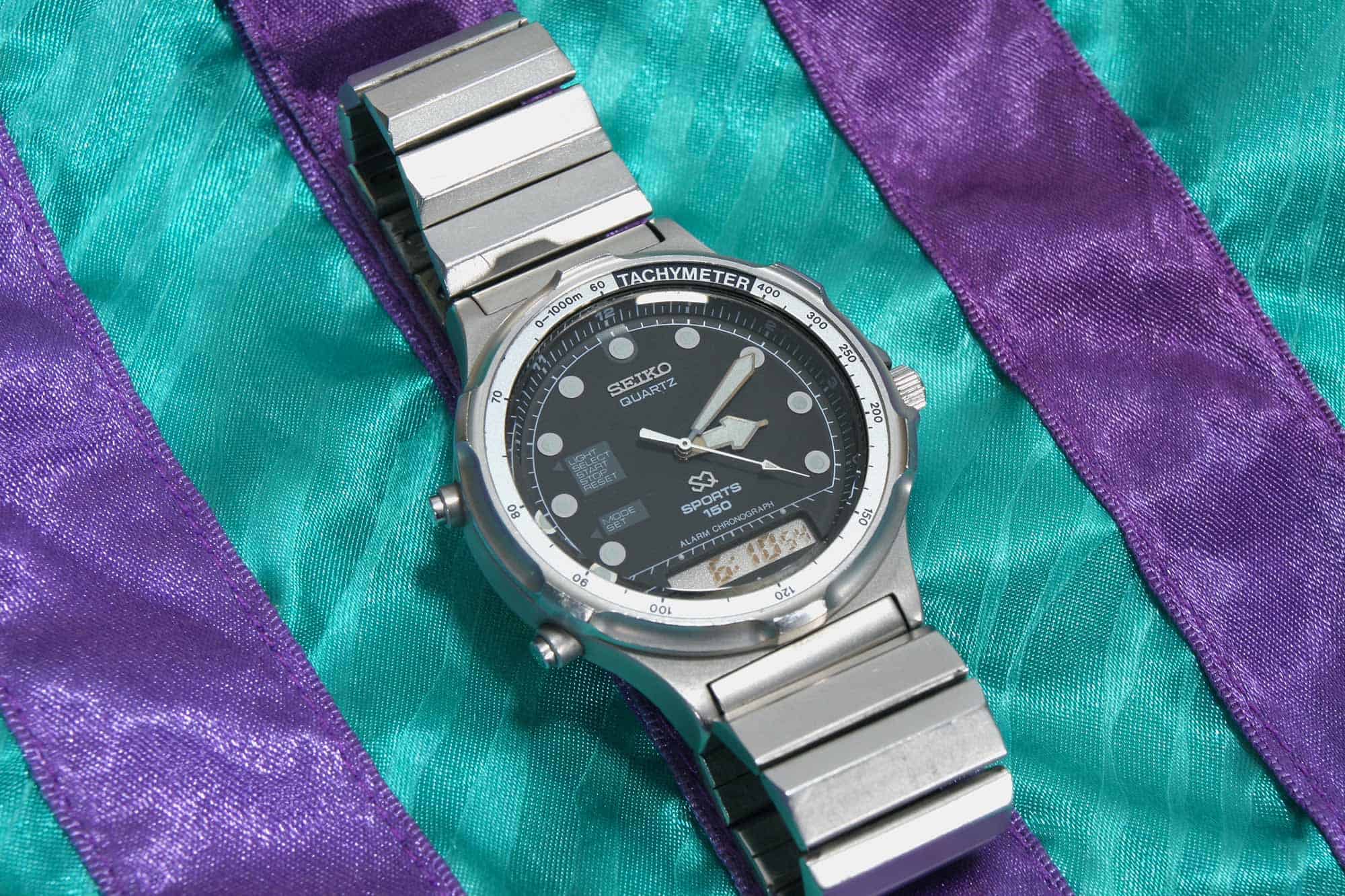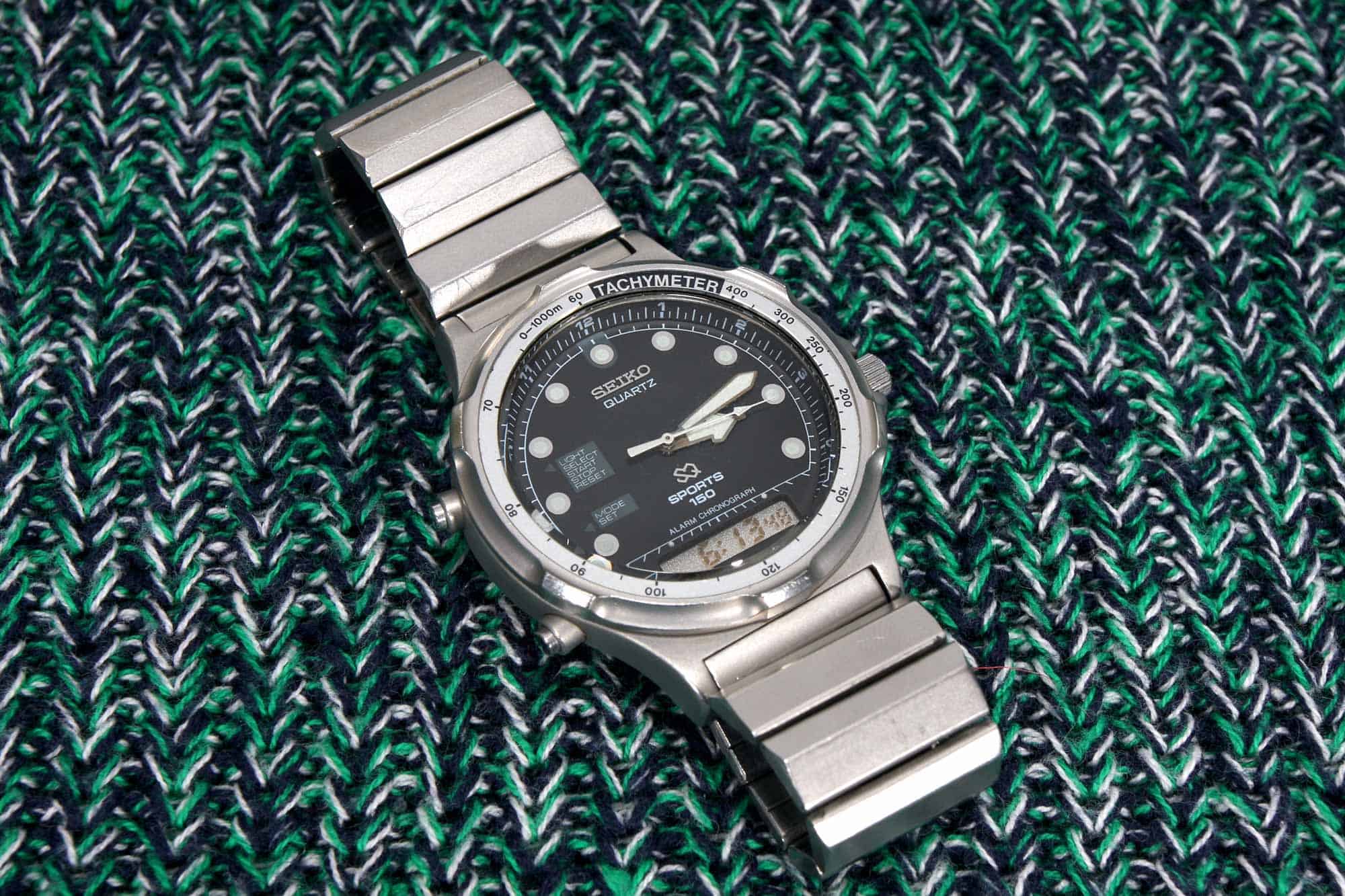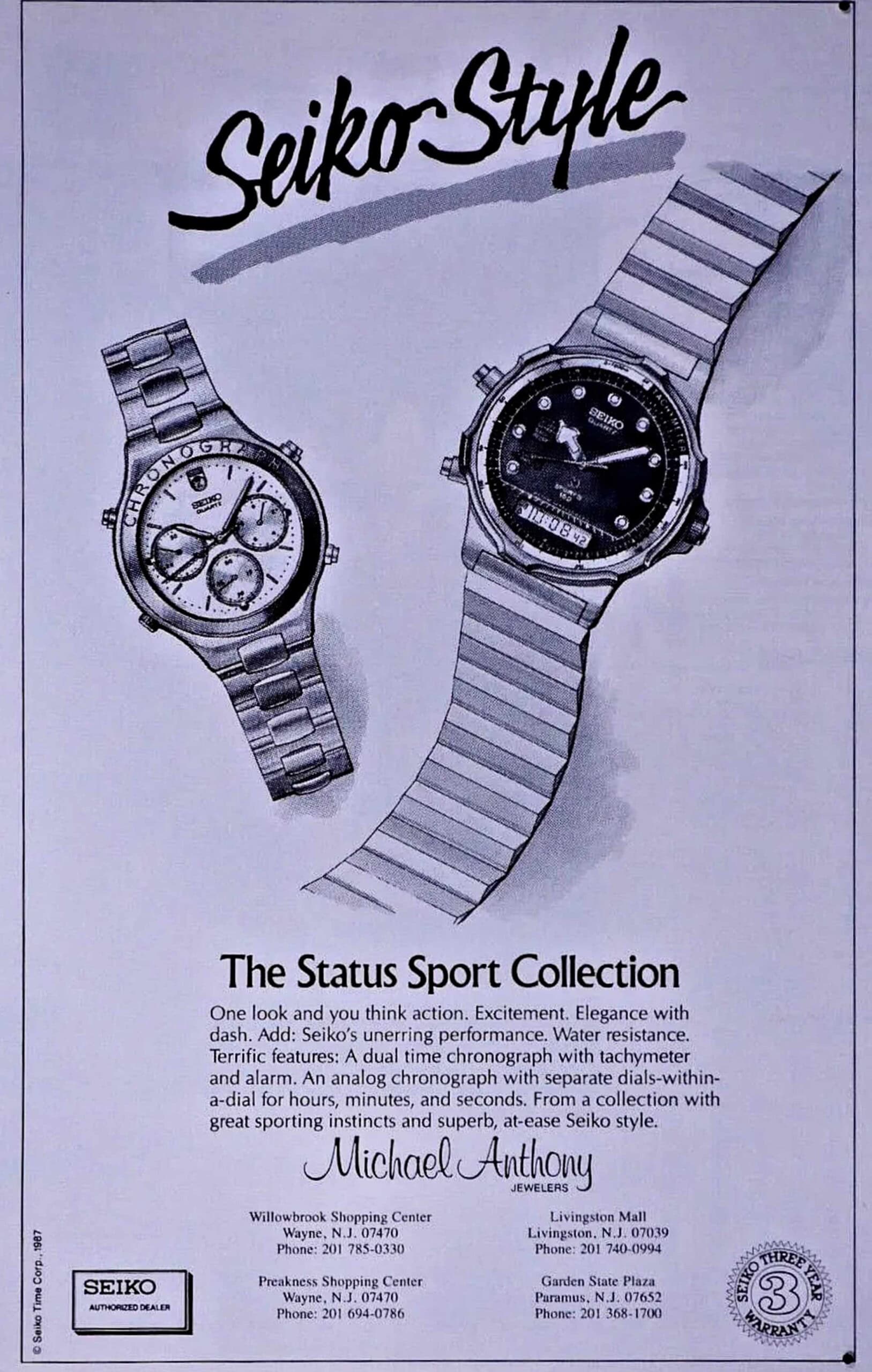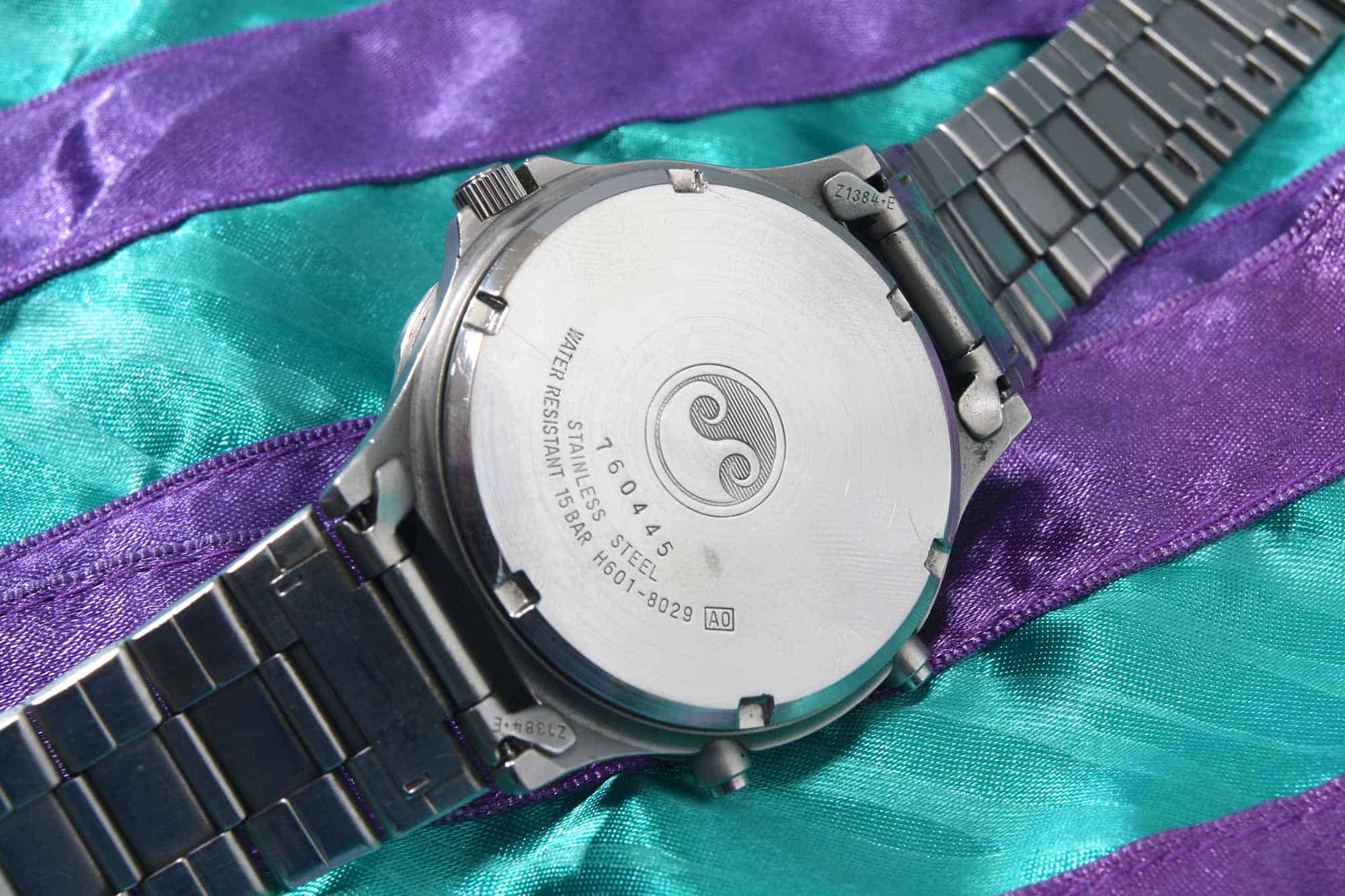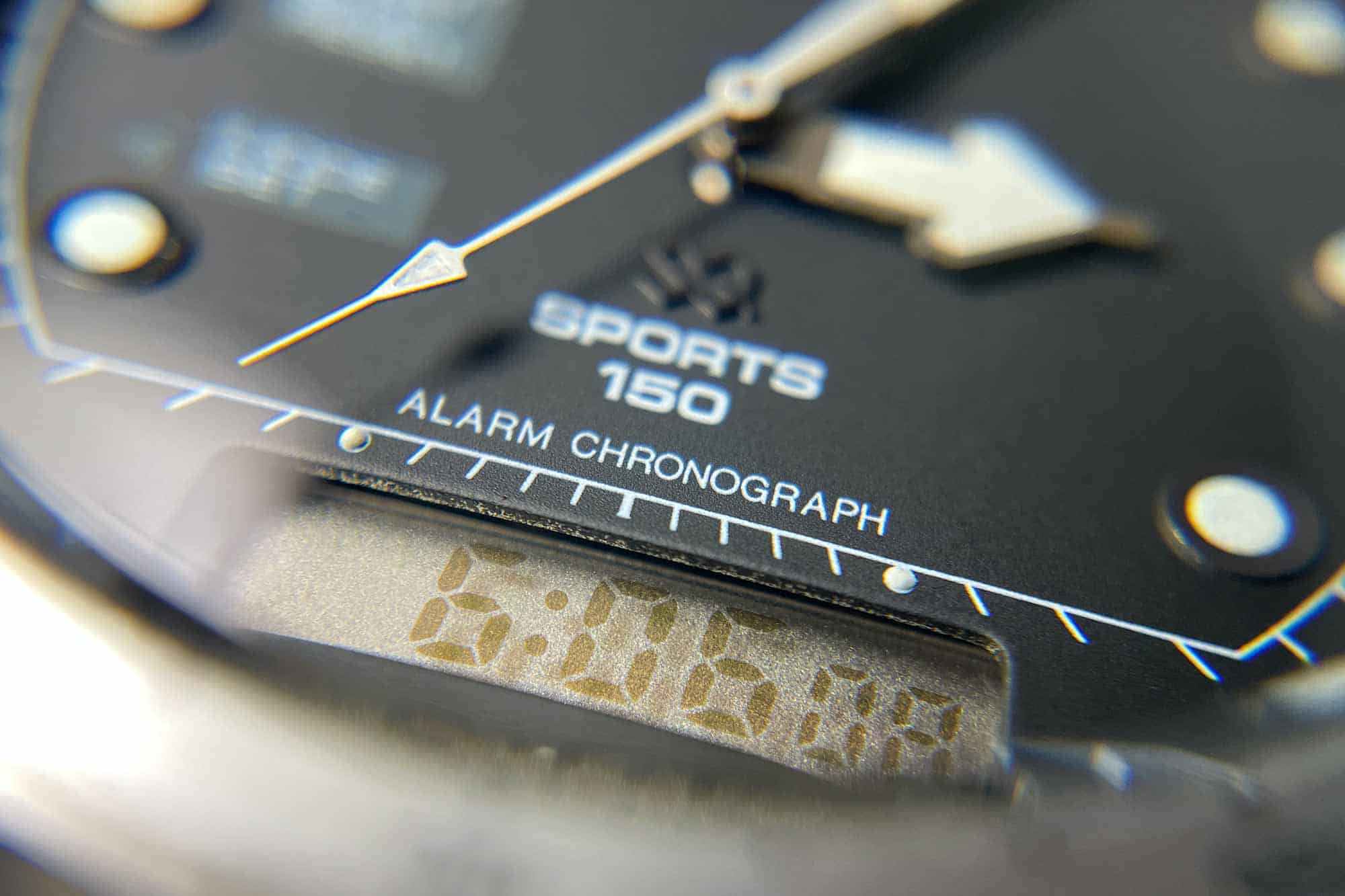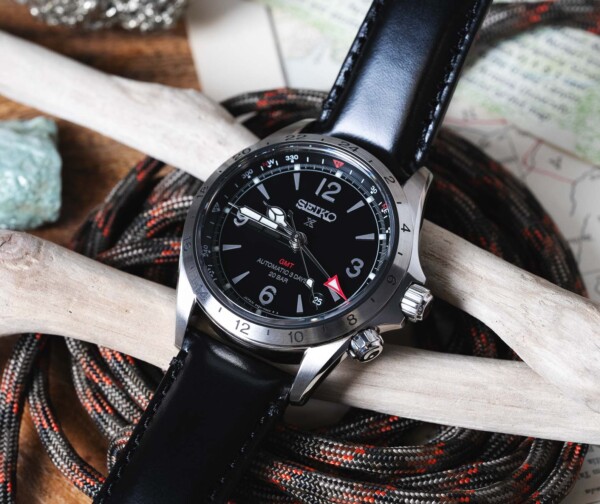Moving on to the watch’s aesthetics, the dial features circular, lumed indices, a minute track, and two boxes which indicate the many functions of the H601––a unique touch not often seen on other Seiko models. The bold handset is arguably more legible than the Arnie, with the hour hand exhibiting a large arrow point at the tip. Its movement and dial are housed in a 40mm case with 18mm lugs, noticeably more conservative in size than the 46mm and 22mm Arnie. The case is 15 BAR water resistant thanks to the screw down crown, screw down case back, and mineral crystal. Its bidirectional rotating bezel includes a tachymeter scale and sports a scalloped edge to offer easier use. The bracelet, case, and bezel are all stainless steel and sandblasted, making the finish a gun metal-like color.

With the help of another H-8020 owner, we were able to track down an advertisement of the watch pictured next to a 7a34-7019 chronograph. Marketed as part of the “Status Sport” collection, this advertisement was created initially by Seiko and distributed by Michael Anthony Jewelers, Holsten Jewelers, and other authorized dealers throughout New York and New Jersey. Documentation was found only in New York-based publications. We could not conclude whether the advertisements were used elsewhere in the country or if other variations of it exist.
Market Availability, Replacement Parts, and Buying Tips
The H-8020 is marginally cheaper than the Arnie, Upside Down Arnie, and Baby Arnie—selling for $200 or less depending on condition, if it has the original bracelet, and if the movement is fully functioning. They pop up occasionally but are more elusive than other Seiko divers of this era, possibly a consequence of their short time on the market (roughly 4 years according to my findings). There is another variant of this model, the H601-802A, which is indistinguishable from the 8020 except for its gold handset and indices. Seiko also placed several of their other ana-digi movements from this era, like the H801and H461, into watches with diver-like aesthetics. While similar to the H-8020, these models feature different attributes like PVD-coated cases, red accents, white dials, compass bezels, and dive bezels. However, if you want to have the closest thing to an Arnie without its bulk and high price tag, the H-820 is the way to go.

In terms of parts, the good news is that the H601 was utilized in dozens of Seiko models during this era. Parts and donor movements can be sourced from the cheaper, less desirable dress watches that used the H601on auction websites today. NOS and Seiko-produced parts specifically made for the H-8020 model––like bezels, hands, crystals, and crowns––are posted from time-to-time and are usually offered for under $50.

Before adding one of these to your cart, however, there are several factors to consider. First, make sure the LCD screen has sufficient contrast levels. Though it may only be a dying battery, these ana-digi LCD screens are known to weaken over time––not a massive deal initially but it may continue fading out as time goes on. Second, if you find one noted to be in not working condition, try it out if the price is right. It may only be a dead battery if the seller never attempted to change it themselves, and even if the movement is dead, swapping it for a working H601 is relatively straightforward if you have basic repair skills and access to YouTube tutorials. Lastly, the bracelet is an incredible piece of Seiko craftsmanship, and if you can find it, be sure to pick it up. The asymmetric links are eye-catching, and the fit and finish make the bracelet-to-case integration flawless. Thankfully, the 18mm lugs make it a good candidate for straps, if need be, but keep your eyes out for that bracelet––it’s worth it.
Final Thoughts
While yes, it lacks the massive shroud and Hollywood appeal of the Arnie, the H601-8020 is nothing to scoff at. It wholeheartedly embraces its 1980s design, but modest sizing and handy functionality make it a perfect modern-day timepiece. Because of its older, bigger, and more famous brother, the H-8020 has become a unique and forgotten piece of Seiko history. I would use “rare” to describe the watch, but the term often holds little weight in the hobby because of how overused it is. It also frequently implies that the piece has a higher monetary value attached to it because of its scarcity.

However, there exists a crossroads in which some watches are both rare and affordable––the H-8020 is a perfect example. Reasonably priced and sensibly sized, the Arnie may garner more attention from the general hobbyist, but watches like the H601-8020 are the underdog stories true enthusiasts live for.









 Featured Videos
Featured Videos




